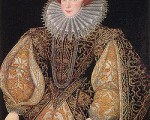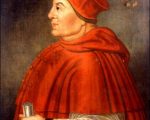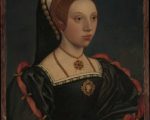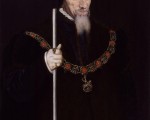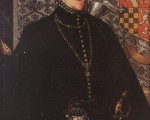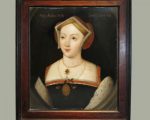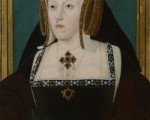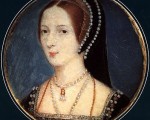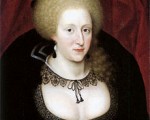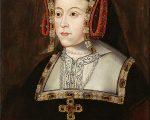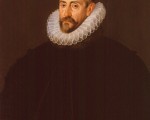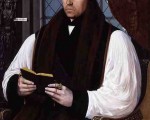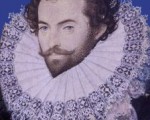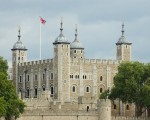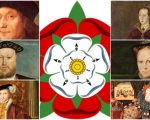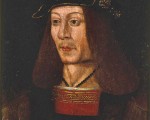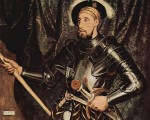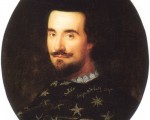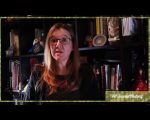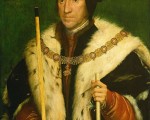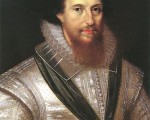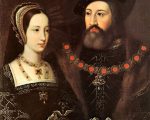
Thank you to Simon for asking the question “What is Mary Tudor holding in the portrait of her and Charles Brandon? Is it an artichoke?”. I knew just the right person to send this question to! I sent it to art historian and author, Roland Hui, who has actually written a very detailed article on this painting (link at bottom). Thank you Roland!
The object in Mary Tudor’s right hand is an artichoke, which interestingly enough is shaped like a royal orb. It is uncertain why Mary is pictured with one, but as artichokes were grown in the south of France, it may have been used to allude to her as France’s former Queen. As well, it might have been meant as a symbol of love and fecundity. Artichokes were said to be sacred to Venus/Aphrodite, the Classical goddess of love and beauty.
The staff emerging from the artichoke is a winged caduceus. This was the magical wand associated with the god Mercury/Hermes. There was an old legend that Mercury had come upon two battling snakes. To make peace between them, the god separated the two with a stick. The serpents then wrapped themselves around it. This uniting of opposites was a fitting representation of Mary Tudor and Charles Brandon’s marriage – the merger of ‘cloth of gold’ and ‘cloth of frieze’ as the couple were described in an inscription on the Yarnborough version of the painting. However, to make the caduceus (and the artichoke) appear less ‘pagan’, the wand is also in the form of a Christian tau-shaped cross.
[Read More...]
